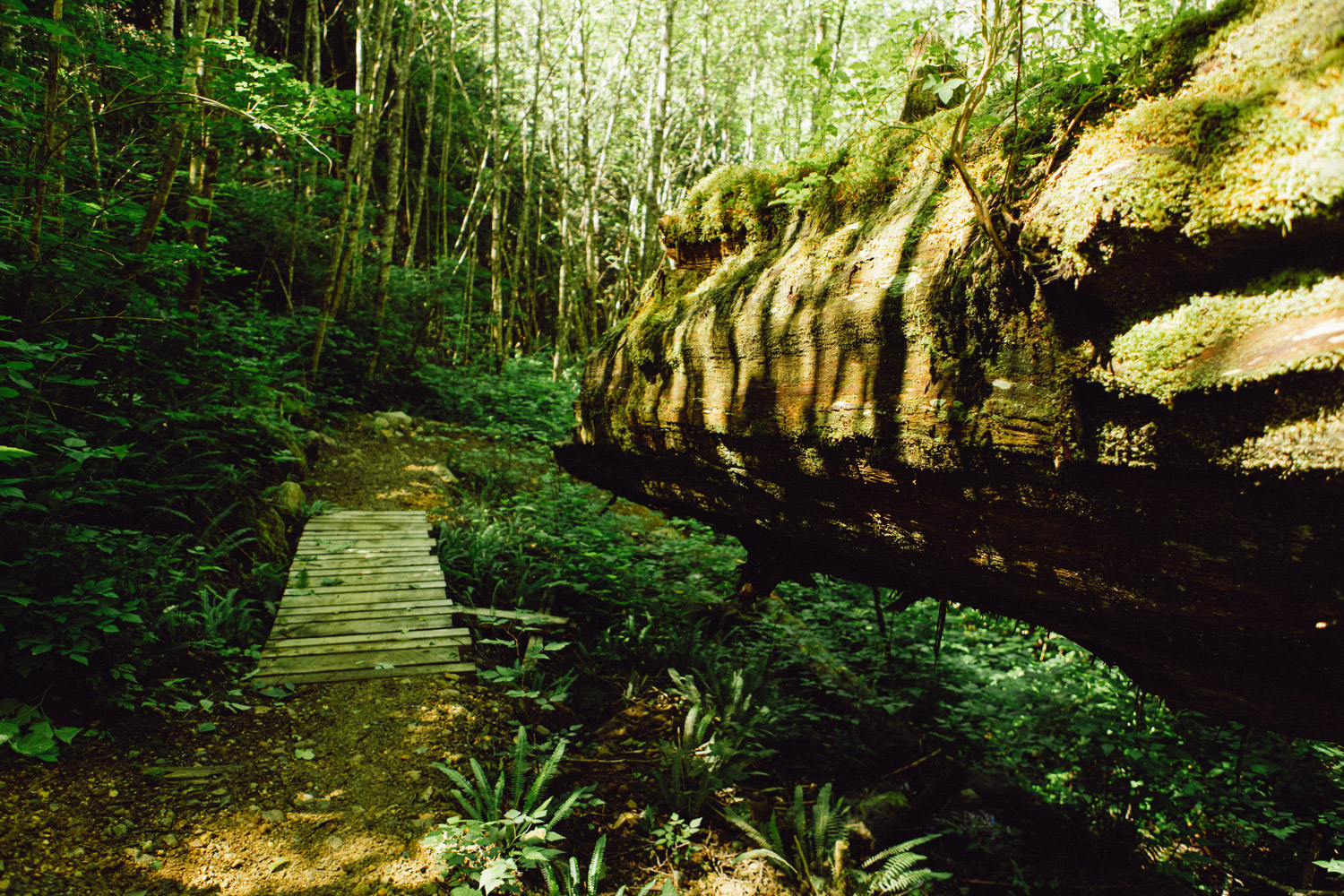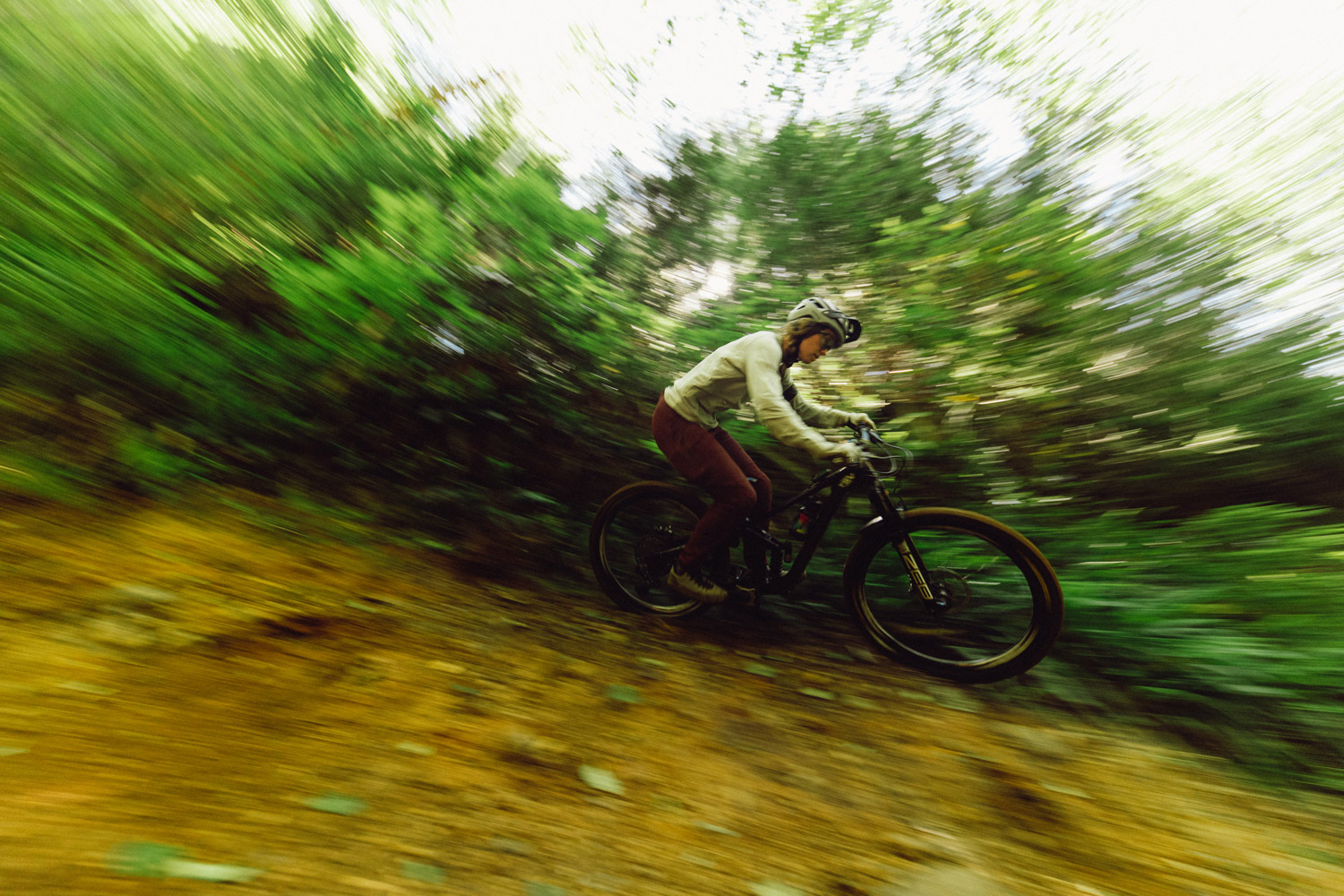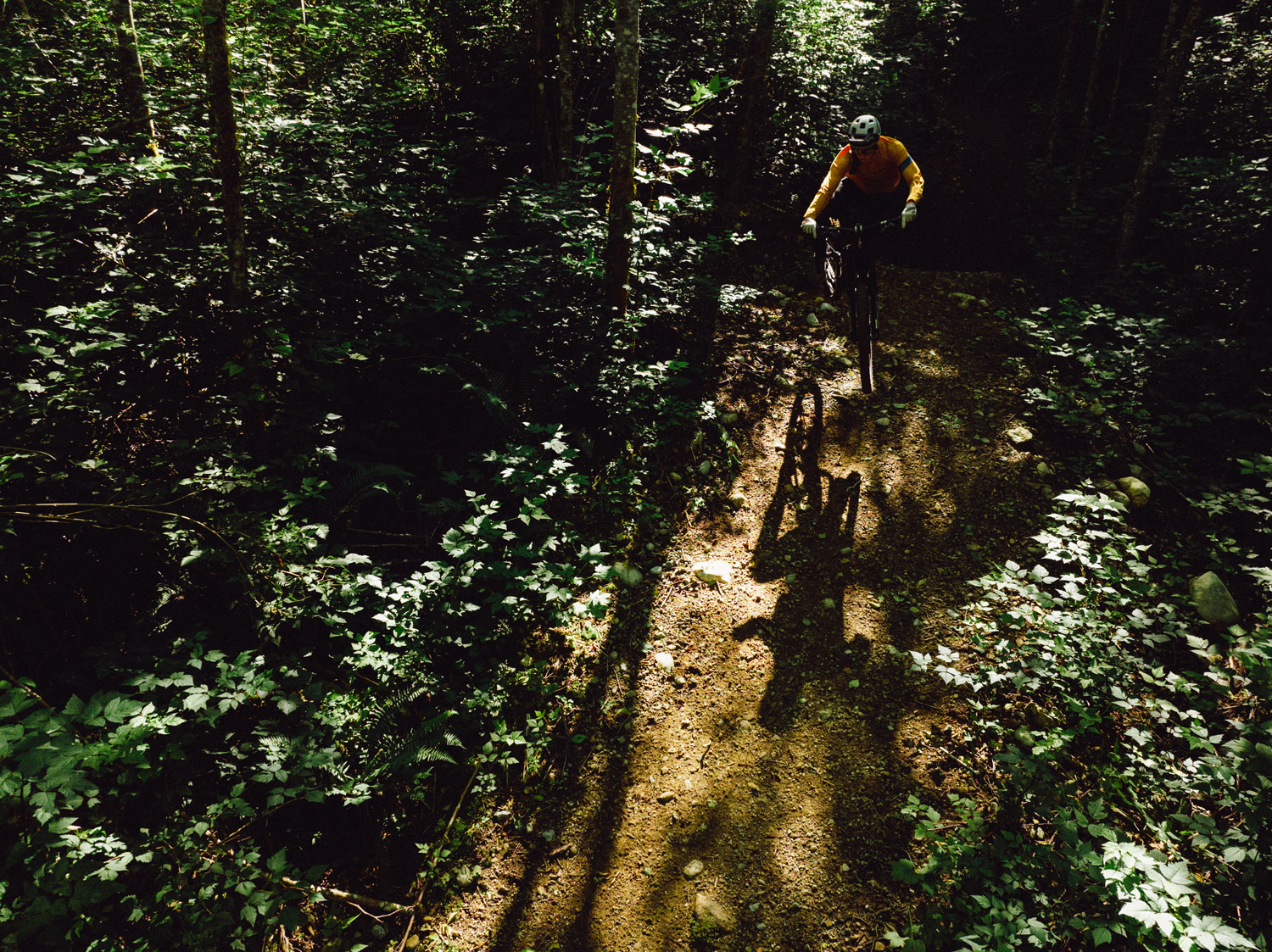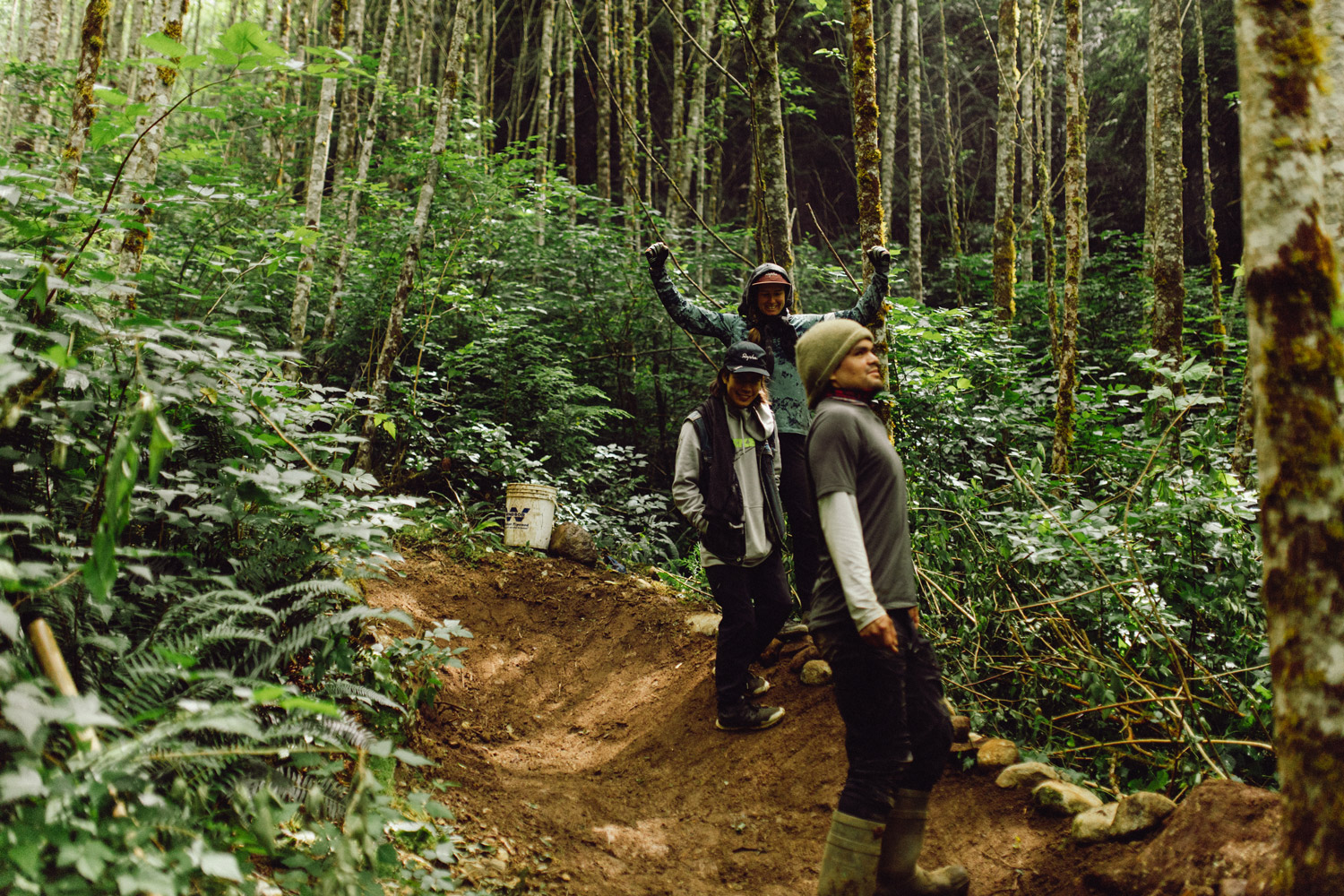I’ve grown up surrounded by mountains. Nearly all the positive experiences and opportunities in my life can be linked back to the landscapes on which I was raised and from an early age, became my playground. Our front door opened to the fields of Pemberton running to the base of the ever impressive Mount Currie and, since moving to Squamish, I have looked daily at the sharp beauty of Atwell Peak and the solid might of the Stawamus Chief. I’ve never taken these views or the beauty of my surroundings for granted. What I have taken for granted was my access to them.
I heard about the Ucluelet (Yuułuʔiłʔatḥ) trail network from my close friend, Carey Cunneyworth who had been hired by the Ucluelet First Nation (UFN) as Director of Culture and Heritage. Carey spoke to me of the Nation’s desire to develop their trail network. A trail network that would strike a balance between preservation and development and how they felt the sport of mountain biking could be an important link to reconnect the community to their land. He talked to me of how the UFN wanted to become one of the first culturally aware mountain bike networks. This struck home. I realized how little information is offered to those who visit my home, the Squamish trail network, regarding the history of the Sḵwx̱ wú7mesh Úxwumixw (Squamish people) and their territory. I wanted to enhance my understanding of my own community as well as others in BC. I was excited, therefore, to receive an acceptance to my request to visit the Yuułuʔiłʔatḥ Nation to learn more about their project.
“The Yuułuʔiłʔatḥ Government is a modern treaty government located in Hitacu on the west coast of Vancouver Island. There are currently approximately 700 Yuułuʔiłʔatḥ Citizens located in Hitacu, Port Alberni, Nanaimo, Victoria, Vancouver, Campbell River, and across Canada and the United States. Our Government jurisdiction extends over nearly 5,500 hectares of Treaty Settlement Land surrounding the community of Hitacu, as well as territory north of Ucluelet, in the Effingham Inlet and along the Nahmint River.




The Yuułuʔiłʔatḥ Government is a member of the Maa-nulth Treaty Society and through the Maa-nulth First Nations Final Agreement, is a modern treaty nation operating with a government-to-government relationship with Canada and the province of British Columbia. Also a member of the Nuu-chah-nulth Tribal Council, the Yuułuʔiłʔatḥ Government continues to promote education and community programs that enhance Yuułuʔiłʔatḥ and Nuu-chah-nulth identity.” *
Čumaat̓ a (Mount Ozzard) is sacred to the Yuułuʔiłʔatḥ people and is rich with historical and cultural connections. The UFN, now with sovereignty over the land once again, have taken up the development, maintenance and control of the trail network in partnership with the UMBA (Ucluelet Mountain Bike Association.)

The trails of Čumaat̓ a, or Mount Ozzard, are rugged and shoot, almost straight down, through a thick, tangled mess of second growth forest. This makes Čumaat̓ a an incredibly challenging hill to build on: the steepness of the slope, the incredibly deep layer of accumulated decomposing windfall, stumps and moss which need to be dug and removed to reach the underlying dirt, and the constant rainforest moisture. Not to mention the bugs. Yet, despite this harsh terrain and physical challenges, it is a place that offers a feeling of peace.



James and Tyson instantly welcomed us to the hill and showed us the work they had been doing and explained the plan for our time with them. We spent the mornings trimming branches, raking debris, building smokey fires to ward off mosquitoes and building berms. Tyson and James both have a great sense of humour and so our work was filled with laughter and hilarity. Conversation flowed easily and they willingly shared their knowledge of their rich culture. After lunch, we would ride the portion of trail on which we’d just worked.
Part of the trail crew, James and Tyson have become mountain bikers. Both new to the sport, it was so cool to see them conquer new trail features or climb higher than before. Seeing others experiencing those euphoric feelings of adrenaline and progression for the first time was a great reminder of how powerful a tool a mountain bike can be.



After building one day, I was surprised to be invited to join Tyson and some community members for canoe practice. They were training for their multi day canoe journey to the Broken Group Islands. We launched the dugout from an Elder’s yard in Hitacu and paddled through the bay to the original village site of the Yuułuʔiłʔatḥ. This was something completely outside my usual life. It was far from what I imagined I’d be doing this summer. What I remember the most is the smell of the water, so fresh and light. To think of what my focus would have been if I hadn’t been in Ucluelet: another round of intervals… This was almost surreal. And so welcome.
Learning the story of the great warrior Hasaas, tying this powerful teaching and piece of history to Čumaat̓ a on the same hill I got to ride, made this experience so much more impactful for me. I was truly honored to be a guest in Hitacu and on Čumaat̓ a for the week. I hope other visitors will feel the same. Every trail has a story. It’s important that there’s opportunity for these stories to be shared.
The trails already in existence were created from outside the nation’s community. Work to integrate them into the overall project is well in development – translations have been made for the trail names. The goal is that every new trail moving forward will be named, written and spoken in nuučaan̓ uł (Nuu-chah-nulth), to help preserve and utilize their language. Work is underway to integrate land and cultural knowledge into the trail system through appropriate signage. Right now James, Tyson and Jay are leading the way as trail stewards. I left looking forward to the time I can return and meet Jay and ride more with James and Tyson.
I arrived home with this new realization: although I grew up exclusively on Lil’wat and Sḵwx̱ wú7mesh territory with friends from both communities, I don’t know my home as I only saw what was directly before my eyes. I spend every day immersed in an area whose full story I don’t know. I arrived home with a new perspective, a new awareness and a new respect for my home—I am a guest here. I’m still learning. What stories will I learn here?
*Yuułuʔiłʔatḥ Government Act, Preamble, Yuułuʔiłʔatḥ Government Website, Accessed Sept. 5, 2022, www.ufn.ca/our-government/




